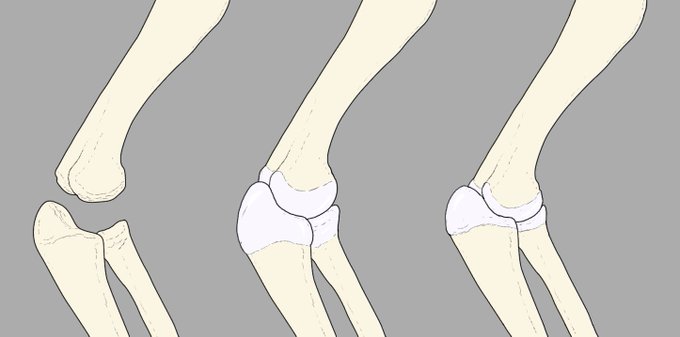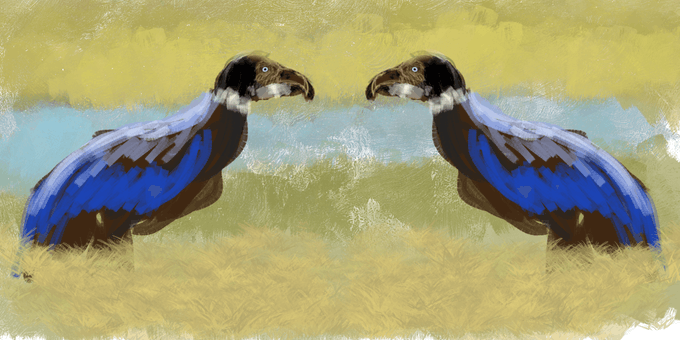FOSSILFRIDAYのTwitterイラスト検索結果。 1,209 件中 32ページ目
The AMNH Anhanguera in an unpublished plate from my PhD thesis. More information on this specimen here: https://t.co/TaVYnaLKZV
#FossilFriday
🦖 🦖 Finally out our last paper describing a new #theropod taxon from the Upper #Jurassic of #Portugal, #Lusovenator santosi, the oldest #carcharodontosaurian #dinosaur from #Laurasia. Check out👇
https://t.co/OkUYPIvhDO
Art from @Carlosdino88
#FossilFriday #LusitanianBasin
For #fossilfriday I naturally need to highlight our new paper on Ankylorhiza. Ankylorhiza means "fused roots" - most early diverging dolphins have double rooted teeth, but nearly all the teeth are single rooted - making it one of the first dolphins to evolve this condition.
Giant, powerful jaw, forelimb morphology convergence in the two major whale clades, and inferred predatory lifestyle like a killer whale! What’s not to like about Ankylorhiza tiedemani, the new Oligocene dolphin? #FossilFriday https://t.co/pRufLjOTKm (📸 Boessenecker et al 2020)
#irritator's name origin is fun for the reader but frustratingly sad for the people who described this beautiful #spinosaurus relative. I tried to keep only the fun part for this #FossilFriday #paleo-merch design: https://t.co/IflZ100IEl
Today another Gessner for #FossilFriday - Conrad himself! The famous crab from his 1565 book on fossils ('De omni Rerum Fossilium' - first systematically illustrated book on fossils) still survives today (NHM Basel). Great paper here: https://t.co/YGqK1qN00F
Welcome to #Lusovenator santosi, a new theropod🦖! Trabalho liderado por @efmalafaia do @IdlLuiz , e contou com a participação da @UNED @ALTSHN @NHMLA . Este dinossáurio é uma homenagem ao seu colector, José Joaquim dos Santos. #Portugal #FossilFriday https://t.co/cdEAnC1lHN
The Late Triassic dinosauriform #Saltopus for #FossilFriday: here in its sandstone and bone-mush "original" form, and alongside its WIP multi-color digital version #ElginReptiles @NatSciNMS @Royalcom1851
A study of Chasmosaurus belli from Feb 17, 2020 for #FossilFriday.
Who would have known ceratopsians don't like missed deadlines?
Based on the skeletal by @skeletaldrawing
#paleoart #sciart #dinosaur
Fossil plants are an informative and super cool topic for artists, and it really helps when paleoartists put time in to communicate paleobotany so other artists can improve their work. Big thanks to @MaijaKarala for her informative 2014 blog on DPF fossil plants #FossilFriday
#FossilFriday musings related to my current research. In living archosaurs epiphyseal cartilages can extend limb bone length from between less than 1% to more than 10%! This has big implications for our modelling of joint kinematics and how we interpet plausible ranges of motion.
Here comes #Irisosaurus!🦕
First collaboration with 🇨🇳 colleagues and students. 😊
We named it after #Yunnan, where it was found. In China, they call it 彩云之南 "the South of colorful clouds" (hence the latin 'iris'). It's very poetic.
https://t.co/jRTwxXC9Ag
#FossilFriday
#Spinosaurus aegyptiacus is one dinosaur boi from Egypt famous for change his form every 5 years or so... Oh, and by the way, there also an meme that represent accurately every paleoartist in the world. #FossilFriday #dinosaur #Sciart #paleoart #paleontology
Los gliptodontes fueron animales particulares. Su cerebro era muy pequeño para su tamaño y en comparación, su cerebelo era grande. Quizás un cerebro grande no era necesario para defenderse o pesaba mucho. Y el gran cerebelo podría ser útil para mover esa pesada cola
#FossilFriday
#fossilfriday Some of my paleoart (Parapontoporia, Psephophorus, Balaenoptera bertae, Pelagiarctos) and a few recommendations - emphasis on those who also do marine critters! @BranArtworks @JoschuaKnuppe @BrianEngh_Art @HodariNundu @AlexBoersma_Art @paleofan @bone_sharpe
Happy #FossilFriday everyone, today we bring offerings of huge cephalopods!
Check out Tyler’s blog post about reconstructing the giant Enchoteuthis (AKA “Tusoteuthis”), for which I supplied some art.
#Paleoart #Paleontology #SciArt https://t.co/8DdfBLiSY5
And this is the above-mentioned Burtele foot (3.4 Ma)...
A new hominin foot from Ethiopia shows multiple Pliocene bipedal adaptations https://t.co/dcUgRtaZLl #FossilFriday
For #paleostream and #FossilFriday: Prodeinotherium, Dodo, Skorpiovenator and Sivatherium
#Majungasaurus crenatissimus was a Abelisauridae from Madagascar, in life he was 2 meters tall and have 7 meters in length. It was the apex predator of his ecosystem, preying on sauropods like Rapetosaurus.
#paleoart #paleontology #dinosaur #FossilFriday #sciart























































